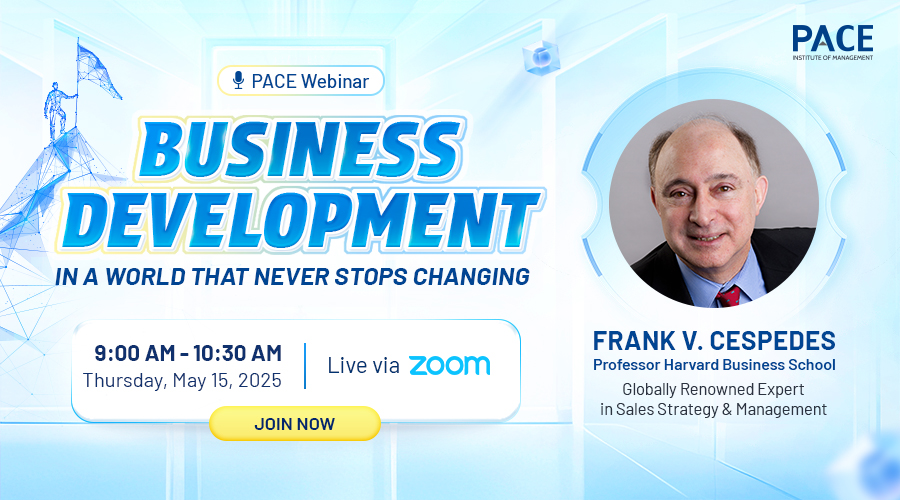After the global financial crisis, the company has focused more attention on the risks that can occur. The leaders of companies, especially large corporations have seen the necessity of managing risks. The Chief Financial Officer also had many changes not only financial but also extend over about the risks will happen. Risk management is considered as an "art" full of fun by the volatility. Here are the 10 principles to the CFO can manage risk in a way "flexible" and "competently".
1. RISK MANAGEMENT STARTS AT THE TOP
Most managers often mention the new business plan, the ambitious development and great prospects in the future, but often overlook the risks.
According to the 2011 Harvard Business Review survey, roughly 42% of companies with 10,000 employees or more have locations Director of Risk Management (CRO).
Companies with a CRO typically have more advanced planning tools in major risk areas, such as the cost of capital, financial regulations, information security, and internal planning and reporting. At General Electric, for example, the board of directors and senior management annually develop a list of the priority risks the company will face in the coming year. The list is public and available throughout the organization. The CRO will directly coordinate operations and ensure management of the risks in any situation. The CRO also reports back frequently to the CEO, CFO, and board in order to discuss the latest trends and any changes in the company’s risk scenarios.
2. RISK MANAGEMENT NOT ONLY IN THEORY
Risk management is not just a theory on paper, not just know to avoid facing these risks. Large enterprises if artless will turn only theoretical risk is theoretically separate forever away from the actual risks they face. These risks need to stick to the actual situation of the company is taking place. The integration of risk management into the operating procedures of the company is essential. This helps managers understand the scope of risks that the company faces by identifying key areas of risk, assessing risk. Since that would have the mitigation plan or leverage against the risks.
3. COMPLEX IS NO REMEDY
The risk management system is not operating system work, so it really depends on the index depth analysis is not so necessary. These risks are assumed rather than aim is that entrepreneurs towards. Simple treatment systems but a cover are essential for managing the risks.

4. RISK MANAGEMENT IS STRATEGY AND STRATEGY IS RISK MANAGEMENT
Most companies tend to think about the risks mainly on the potential financial risks. Although this is an important aspect, but not really enough to talk about the potential risks in the operation of the business. Of the 100 companies with the largest stock-price losses during the period from 1995 through 2004, only 37 were hurt by financial risks (caused by unexpected price movements in financial instruments or raw materials), while the rest of the company, almost doubled due to being affected by the risks from implementation strategy. It is important to have a strategy for possible risks to the future and see it as part of an indispensable business strategy. Risks on aspects also need to be scrutinized as well as risks arising from financial.
5. RISK MANAGEMENT IS MORE THAN A POLICY, IT IS A CULTURE
Risk management is a culture. The goal of risk management is not only to enforce the new policies but also to create an organizational culture, promoting the initiative in resolving not just in response to these risks. The objective of the "culture of risk awareness" not to evade or to the balance of risks. In some cases, the risk is the need to accept in order to capture other important opportunities.
6. A RISK-AWARE FOR THE WHOLE SYSTEM
Data on potential risks to encapsulate not only the board but also the information to the department in the company. Information circulated within the company so that each individual has an awareness and understanding of the potential risks in the operations of both companies and their respective parts. The CFO needs the information as well as continuous updates to the head of department and recorded the actual case from the staff.
7. WHAT MATTERS IS THE “TALK”, NOT THE “REPORT”
Risk management is the accurate prediction of a future uncertain. And the fact that not a businessman or manager who wants the data in the exact plan of risk entirely. Risk management is aware of the level of the undesirable effects affecting the development of the business. Since then prepared for losses at their lowest or metabolic risks into opportunities of development.
8. RISK MANAGEMENT IS NEVER ABOUT FINDING “THE ANSWER”
The risk is never real, it varies based on many factors come from within the enterprise or the impact of the overall situation of economic markets. Assumptions about the risks often change quickly. Not exclude the changing trends of the market economy can also create new risks. These risks need to be constantly reviewed and updated scenarios of situations can happen in the future.
9. IT IS POSSIBLE TO PREPARE FOR UNKNOWN RISKS
Some of the most difficult risks that companies face are so-called black-swan events that are, literally, without precedent. Such risks can be deadly because they threaten a company’s fundamental ability to operate. Take, for example, the impact of the 2011 Japanese tsunami on the viability of the Japanese nuclear-power industry. BCG’s research has demonstrated that highly adaptive companies outperform less adaptive companies in periods of economic turmoil.
10. SUCCESS IN RISK
Solutions of the businessman with the risks often evade or fearing the loss of turnover or loss of benefits. Instead, companies can seize opportunities in risks to reversed or create breakthroughs difference. Managers can turn the worst case scenario of becoming a perfect scenario for a crisis situation is ongoing.
Source BCG









.jpg)
.jpg)
